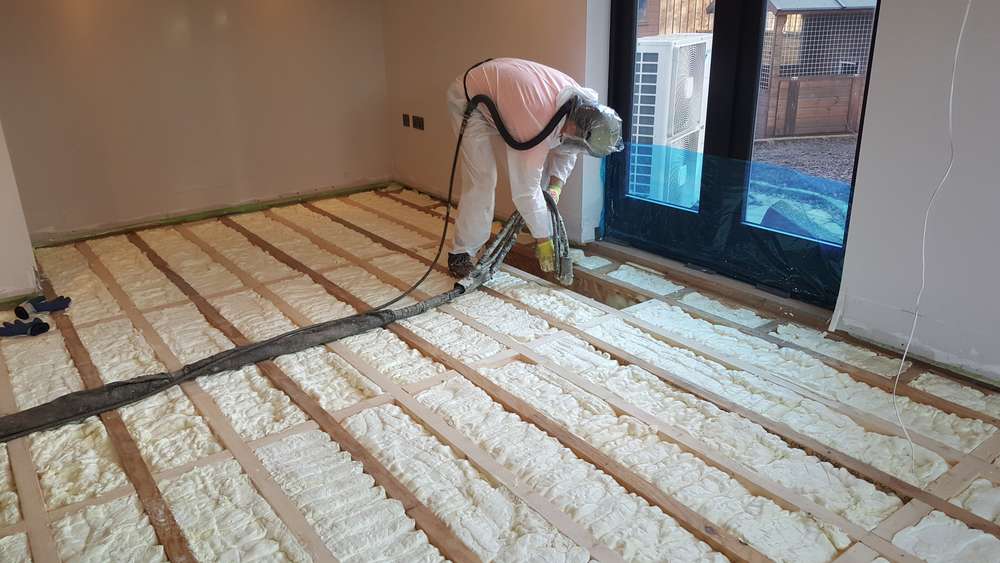Attic Spray Foam Insulation Oldcastle
3 Bed Semi Attic Insulation Oldcastle

Attic Insulation Oldcastle
Spray foam is versatile and can be used for a wide variety of purposes. Spray foam will benefit roofs and windows as well as interior and exterior walls.
Spray foam insulation will not only keep you home warm in winter, but will also keep it cool during the summer. Spray foam insulation allows the house to breathe because it allows moisture-laden atmosphere to escape through its “Cell” structure.
Benefits of Spray Foam Insulation for your home
Other applications include agricultural farm houses and commercial andindustrial buildings, sheds and shipping containers.
It also acts as an airtight shield around the house to keep out cold wind and rain. It allows the heat from your home to escape, which is what most other insulating products today fail to do.


Cost Price Of Spray Foam Insulation
Spray foam insulation has proven to be the most effective insulation material on the market today. It has a higher insulating value than other materials like rock wool or fiberglass.
Spray foam insulation is also a good sound barrier. It reduces outside noise by up to 50%. This is especially beneficial for companies or homes located in densely populated areas or near airports.
Insulate Your Oldcastle Property Properly
It’s used to dampen sounds that travel from room to room and across floors between interior walls. It is especially useful for bathroom walls where noises from toilets and showers can cause nuisances.
It is easy to use and does not cause any disruptions to your daily activities.
In just one day, you can insulate an Irish home.
Encasing and isolating pipes reduces noise in the walls or under-floor.

Boards should be laid over the joists if the loft or attic is to be used for storage. The insulation will not be thick enough if it is only between the joists.
This material reduces the sound transference significantly when it is used within walls, attics or roofs, as well as floors, in comparison with fibreglass, rock wool, and polystyrene board. The dense composition of the material and the application process result in a completely airtight enclosure. It blocks sound from outside, including traffic, pedestrianised streets, and areas near airports.
It also prevents sound generated from within a building from reaching adjacent floors or the floors below them. Spray foam insulation would dramatically reduce the noises that are often generated in a structure.
Spray foam insulation is flexible but densely packed with millions if minute air bubbles. This will absorb vibrations from the floor as well as the sound waves. Spray foam insulation reduces transmission of airborne sounds by sealing and filling every crevice.
Spray foam insulation can also dampen, if not completely eliminate, sounds from floors such as water moving through pipes. The insulation completely surrounds pipes to prevent them from moving and keeps them secure. It eliminates the sound that is made when hot water flows through pipes from heating system. This causes wooded joints to expand, creak, and groan.
It also stops heat from escaping to the upper levels, which makes the lower floors cooler and requires more heat to keep them warm.
If the loft is accessible and free from damp or condensation, insulation should be simple. In many cases, you can do it yourself.
In an uninsulated house, 25% of heat escapes through the roof. Insulating your loft or attic is a great way to cut heat loss and save money on heating.
If you have access to your loft joists and it is easy to use, mineral wool insulation rolls can be used. The insulation begins by placing the first layer between the joists. These are the horizontal beams that form the loft’s floor. A second layer is then laid at right angles to cover and seal the joists.
You can raise your floor to provide enough insulation. You can install timber battens on the floor joists. Or, you can use purpose-built legs made of plastic that fit on the leg and support the floor. To prevent condensation from forming on the boards’ undersides, it is important to ventilate the air gap between insulation and boards.
You should not squash the mineral wool while you place the boards on top. This will decrease its insulation value.
Insulation stops heat from escaping to living spaces. If your loft is not cool enough, it could make existing damp or condensation worse. Consider increasing ventilation if you’re installing loft insulation by yourself.
Another way to insulate your loft would be to place insulation between and above the rafters. These are sloping timbers which make up the roof. You have two options: rigid insulation boards that are carefully cut to your specifications or foam insulation spray between the rafters.
Some companies offer to fix a roof that is leaking or damaged by applying foam insulation directly to the roof. This will not solve the problem. We don’t recommend this. It is important to ensure that your roof remains dry before installing insulation.
If you are looking to use your loft as an indoor heating room, you can create a space in the roof.
If you’re planning on using your loft as a living room, or it’s being used already, make sure all walls and ceilings that divide a heated and unheated space have insulation.
The air needs to move freely through your house in order to keep it fresh, dry and healthy. Good installers will ensure that there is no obstruction or sealing of any inadvertent ventilation. You should not cover vents, grilles, or airbricks when you are doing DIY insulation.
If you have difficulty accessing your loft, a professional can install the appropriate insulation. The specialist equipment will blow the insulation material into any difficult space. They may use mineral wool fibres, treated cellulose foam or polyurethane.
Flat roof insulation can save you as much on heating costs than loft insulation. The amount of flat roofing on a property will determine how much savings you get.
You can probably insulate your loft yourself if it is accessible and does not have damp problems. If there are damp issues or more complex insulation needs, a professional should be hired.
Cold draughts could be caused by the cooler loft air. This can be prevented by installing an insulated hatch in your loft and putting strips of draught-exclusion material around the hatch edges.
Insulating your ground-floor is a great idea to keep your property warm and lower your energy bills.
Insulating a loft is an effective way to lower heating bills, be more efficient and warm your home in the winter. Even if you already have insulation, it is crucial to have the best amount in order to make it effective.
Loft floor rolls – These are the more traditional option. They are rolled along the loft’s floors. They are less difficult to lay than insulated boards. They are available in loose and encapsulated rolls (blanket) and can be used for both top and bottom layers. You can use stilts or boards to board them. This will create a raised platform that is suitable for storage.
These items and tips are not included in the article’s list. Before you start insulation of your loft floor, make sure you have read all instructions.
Although insulation is present in many homes, it might not be as effective as you would like. This could be due either to storage boards being placed on top of it, or because the insulation has not been maintained for a long period. Older properties may have a loft floor as low as 25mm deep.
Good news is that you don’t need to remove existing loft floor insulation. To get the recommended amount, just add one to three layers more. This article will cover more details on the amount that is recommended.
Your loft floor’s joint spacings will affect the width of the roll. This is because the insulation rolls between these joists. It is best to choose one that matches your joist spacing. This reduces the need for trimming.
The insulation’s thermal resistance. Another alternative is to measure the thickness of insulation if you only lay loft rolls. You can find more information in the section “How to calculate loft floor insulation thickness”
Areas We Service


Parkhill, Dublin
01 5255297

